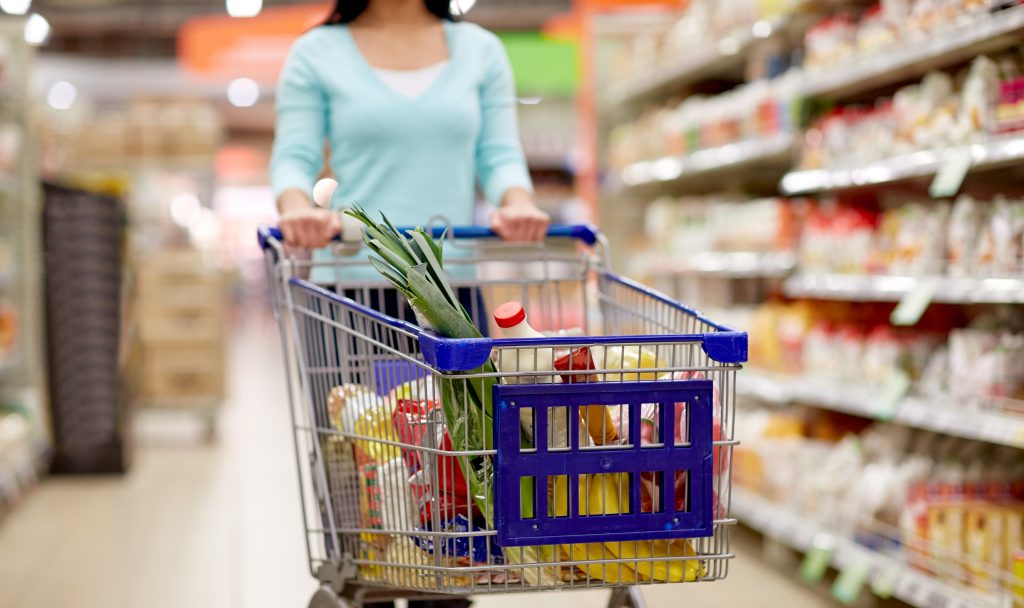You’ve determined your product specs and developed a formula with your pet food manufacturing partner. What’s next? In this blog, we discuss how to create a product bag that stands out on the shelf.
Pet food packaging plays an important role in the marketability of your product, especially if it’s a private label brand competing with household names.
And in today’s pet food aisle, competition is fierce. The humanization of pets and resulting premiumization of pet food has transformed the marketplace. Pet parents expect a diverse menu of products that align with their pets’ nutritional needs—and their own values.
If you want your product and brand to succeed in retail, pet food packaging has never been more important.
How to Make Your Pet Food Packaging Ready for Retail
Pet food packaging is about more than just picking the breed you want to feature on the front. There are important stylistic, functional and regulatory elements to consider that make your bag ready for retail.
Choose Bag Size & Style
Your bag size and style depend on many factors including the type of product you’re bringing to market, and the shape and size of your formula, density and volume.
Bag size in particular comes down to the density of your product.
For example, when kibble comes out of the extruder and is exposed to oxygen, it can expand. This results in a lighter, fluffier kibble (less dense) that also takes up more room in a bag. So, it’s important to be aware of the time your product spends in the extruder and the ending density. That way, you end up with a bag that does not appear too full or too empty.
In terms of style, there are many options to choose from, including:
- Stand up pouch: A popular option for treat packages weighing 1-8 lbs.
- Quad seal bag: For small and large-volume bags weighing 3-40 lbs., offering 4 panels.
- Flat bottom bag: For bags weighing 2-25 lbs., offering a larger design canvas.
- Pinch bottom bag: For larger-volume bags, typically on the bottom shelf.
Select Material
Pet food bags come in not only many different shapes and sizes but also different materials.
Options include:
- Paper: The original go-to choice for pet food packaging, but being replaced by other materials due to supply and functionality concerns.
- Plastic: Offers a level of freshness that other materials struggle to emulate.
- Polywoven: Multi-layered pet food bags work well for large packages of dry kibble.
- Matte: Matte and soft-touch matte surfaces are increasing in popularity due to the visual and tactile aesthetic.
You’ll want to select a material that is practical but also visually and tactilely appealing to your customers.
Freshness is a top priority, so if you choose to go a nontraditional material route (especially as sustainability becomes more and more important), you can incorporate other bag features to save freshness, such as:
- Easy to use sliders
- Velcro or other hook-to-hook products
- Press-to-close (PTC) zippers
Design Artwork
With so much competition, pet food brands can differentiate with well-designed bags that catch the consumer’s eye.
While this ultimately comes down to your own visual brand as well as the elements discussed above, here are some tips to consider:
- Brighter colors are likely to grab more attention.
- But only use a limited number of colors so your bags are easy-to-read. Plus, more colors are more expensive because it requires additional plates in the printing process.
- Print high-end graphics to represent your high-quality production.
- Design a bag that can stand the test of time, because there will be lag between designing the packaging, producing the bag, filling it and hitting the shelves.
Ensure Compliance
Lastly, don’t sacrifice label clarity (and compliance) for a unique design.
This is important to pet parents because if they can tell your pet food is safe and nutritionally balanced, they are more likely to choose your brand over another.
Make sure to adhere to your state’s labeling standards, which normally follow AAFCO (Association of American Feed Control Officials) model regulations. The easiest way is to do this is by checking the requirements of the state your bag will be registered in.
But in short, your pet food bag label needs to include:
- Product name
- Intended species
- Guaranteed analysis
- Ingredient list
- Nutritional adequacy statement
- Net quantity statement
- Calorie statement
- Feeding instructions
- Contact information for manufacturer/distributor
How a Pet Food Partner Can Help
Because there are so many considerations, getting your bag ready for retail might feel like a major task. And it is.
But it’s more manageable with a strong pet food partner.
For example, if you’re considering nontraditional packaging materials, your partner can conduct production trials to ensure quality and freshness. Your partner can also be your regulatory expert, making sure your brand is accurate and trustworthy.
From the size and shape of your kibble, to the graphic design of the bag, to the compliance of the label, your pet food partner can not only help you execute but also inform each and every decision.
Conclusion
Consumers have more pet food options to choose from than ever before. You need every advantage you can get. So, think critically about these pet food packaging decisions. They will make all the difference when your product hits the shelves.
Alphia helps develop market-leading pet food from concept to distribution. Contact us to learn more about how we can work together.
